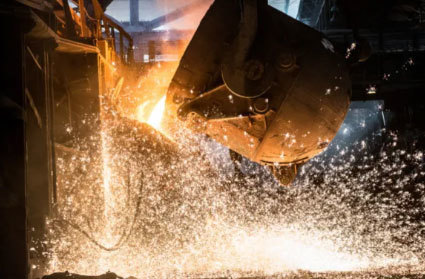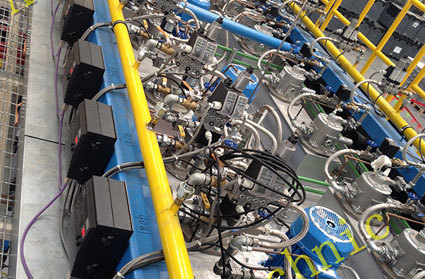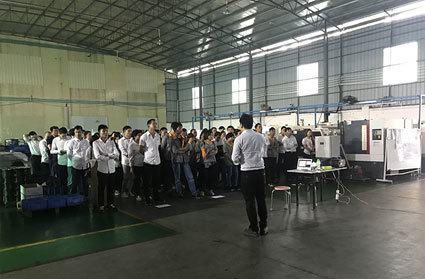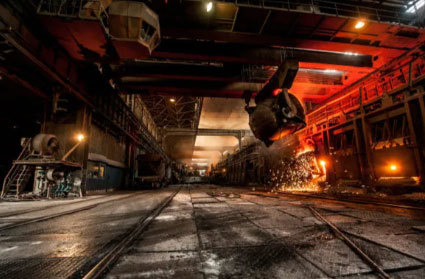Industrial Furnace-Development Course of Industrial Furnace
The creation and development of industrial furnaces play a very important role in the improvement of human beings. In the Shang Dynasty, China launched a relatively perfect copper smelting furnace, with a furnace temperature of 1200 ℃ and an inner diameter of 0.8 meters. In the age of the Warring States period, people in the foundation of the copper melting furnace long further grasp the technology of improving furnace temperature, thus producing cast iron.
In 1794, a straight-tube cupola for smelting cast iron was launched in the world. Later in 1864, the Frenchman Martin used the British Siemens regenerative furnace principle to build the first open-hearth steelmaking furnace heated by gas fuel. He uses the regenerator to preheat the air and gas at high temperature, thus ensuring the temperature above 1600 ℃ required for steelmaking. Around 1900, the supply of electric energy was gradually sufficient, and various resistance furnaces, electric arc furnaces and cored induction furnaces were used.
In the 1950 s, coreless induction furnaces developed rapidly. Later, electron beam furnaces were introduced, using electron beams to impact solid fuels, which can enhance surface heating and melt high-melting materials.
The furnace used for casting heating was originally a hand forging furnace. Its working space is a concave groove filled with coal. The air for combustion is supplied from the lower part of the groove, and the workpiece is buried in the coal for heating. The thermal efficiency of this kind of furnace is very low, the heating quality is not good, and it can only heat small workpieces. Later, it will be developed into a chamber furnace with semi-blocked or fully blocked hearth made of refractory bricks. Coal, gas or oil can be used as fuel, or electricity can be used as heat source. The workpiece is heated in the hearth.
In order to facilitate the heating of large workpieces, a trolley-type furnace suitable for heating ingots and large billets was also used, and a well-type furnace was also used to heat long rods. After the 1920 s, various mechanized and automated furnace types that can improve furnace yield and improve labor conditions were introduced.
With the development of fuel resources and the improvement of fuel conversion technology, the fuel of industrial furnace is gradually changed from lump coal, coke, pulverized coal and other solid fuels to gas and liquid fuels such as producer gas, city gas, natural gas, diesel oil and fuel oil, and various combustion devices suitable for the fuel used have been developed.
Industrial furnace structure, heating process, temperature control and furnace atmosphere, etc., will directly affect the quality of the processed products. In the casting furnace, the progress of metal heating temperature, can reduce the deformation resistance, but the temperature is too high will cause grain growth, oxidation or over burning, severe impact on the quality of the workpiece. In the heat treatment process, if the steel is heated to a certain point above the critical temperature, and then cooled, the hardness and strength of the steel can be improved; if heated to a certain point below the critical temperature after slow cooling, it can reduce the hardness of the steel and make the toughness progress.
In order to obtain a workpiece with precise size and smooth surface, or to reduce metal oxidation to protect the mold and reduce the machining allowance, a variety of less oxidation-free heating furnaces can be used. In the open flame less non-oxidation heating furnace, the use of fuel incomplete combustion to produce reducing gas, in which the heating of the workpiece can reduce the oxidation burning rate to less than 0.3 percent.
Controlled atmosphere furnace is the use of artificial preparation of the atmosphere, through the furnace can be carried out gas carburizing, carbon and nitrogen co-penetration, bright quenching, normalizing, annealing and other heat treatment: to achieve the purpose of changing the gold phase organization, the progress of the mechanical function of the workpiece. In the active particle furnace, the combustion gas of fuel or other fluidizing agent applied externally is used to forcibly flow through the graphite particles or other inert particle layer on the furnace bed. The workpiece is buried in the particle layer to achieve enhanced heating, and various non-oxidation heating such as carburizing and nitriding can also be carried out. In the salt bath furnace, www.efurnace.cn uses molten salt as the heating medium to prevent oxidation and decarburization of the workpiece.
The melting of cast iron in the cupola furnace is often affected by the premise of coke quality, air supply mode, furnace charge and air temperature, which makes it difficult to get high-quality molten iron. Hot air cupola can effectively improve the temperature of molten iron, reduce alloy burning loss, reduce the oxidation rate of molten iron, which can produce high-grade cast iron.
With the rise of coreless induction furnace, the cupola has a tendency to be replaced gradually. The smelting work of this induction furnace is not limited by any grade of cast iron, and can be converted from smelting one grade of cast iron to smelting another grade of cast iron quickly, which is conducive to the improvement of the quality of molten iron. Some special alloy steels, such as ultra-low carbon stainless steel and steel used for rolls and steam turbine rotors, need to melt molten steel from open hearth furnace or general electric arc furnace, and further refine high-purity, large-capacity high-quality molten steel by vacuum degassing and argon agitation in the refining furnace.
The fuel source of flame furnace is wide, the price is low, and it is convenient to adopt different structures according to local conditions, which is conducive to reducing the productivity, but the flame furnace is difficult to achieve precise control, the environmental pollution is severe, and the thermal efficiency is low. The electric furnace is characterized by the average furnace temperature and easy to realize automatic control, good heating quality. According to the energy conversion method, the electric furnace can be divided into resistance furnace, induction furnace and electric arc furnace. The furnace heating capacity calculated by unit time unit furnace bottom area is called furnace yield. The faster the furnace heating rate and the greater the furnace loading, the higher the furnace yield. In general, the higher the furnace yield, the lower the unit heat consumption per kilogram of material. Therefore, in order to reduce energy consumption, we should produce at full capacity, improve the furnace yield as much as possible, and at the same time implement automatic proportional adjustment of fuel and combustion-supporting air on the combustion device to prevent excess or insufficient air volume. In addition, it is necessary to reduce the heat storage and heat loss of the furnace wall, the heat loss of water-cooled components, the radiation heat loss of various teeth, and the heat loss of the flue gas away from the furnace.
The ratio of the heat absorbed by the metal or material during heating to the heat supplied to the furnace is called the furnace thermal efficiency. The continuous furnace has higher thermal efficiency than the interrupted furnace. Due to the high output rate and uninterrupted operation of the continuous furnace, the furnace heat rail system is in a non-chaotic state and there is no periodic heat storage loss of the furnace wall. It is also because there is a section for preheating the furnace charge inside the furnace chamber. The waste heat of the flue gas department is absorbed by the cold workpieces entering the furnace chamber, the temperature of the flue gas from the furnace is reduced.
In order to make the furnace temperature constant and realize the designated heating rate, in addition to determining the excellent furnace structure according to the process requirements, preheater and furnace mechanical types, fuel and combustion device types, industrial furnace exhaust gas, etc., it is also necessary to adjust the flow rate and pressure of fuel and combustion air, or controllable variables such as electric power through various control units to realize automatic control of furnace temperature, furnace atmosphere or furnace pressure.
The gas is liquefied gas, natural gas, coke oven gas, city gas, converter gas, mixed gas, producer gas, blast furnace gas, etc.
recommend News
Equipment Development of Industrial Furnace
 Chinese
Chinese






